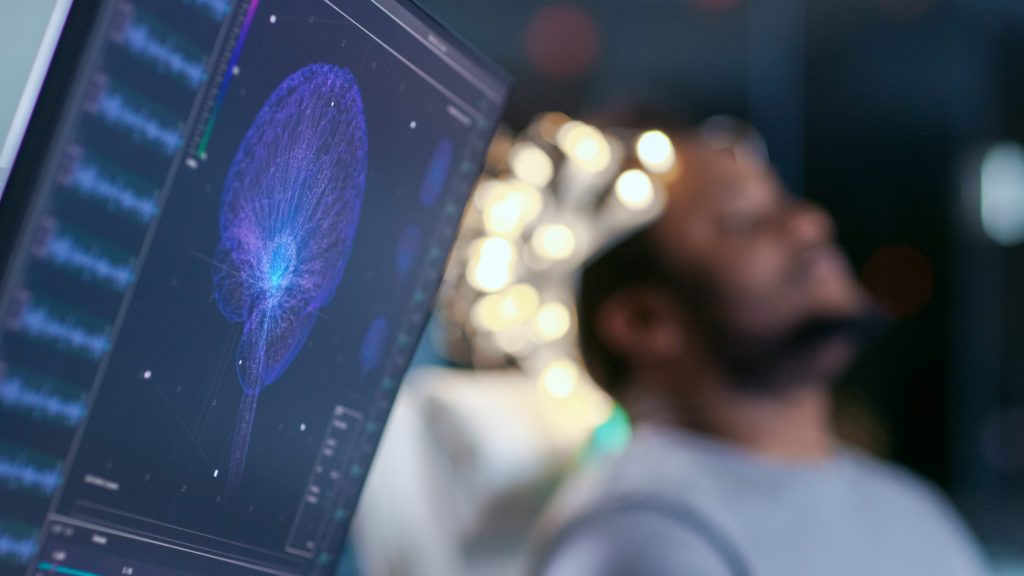As seen in Psychology Today.
Neuromodulation has been a fast-growing area of medicine for at least a decade. Despite becoming an increasingly common way to treat chronic pain, neurological disorders, and even psychiatric conditions, it still represents a paradigmatic shift in the thinking of many clinicians for whom lifestyle changes, drug therapy, and psychotherapy comprise the universe of treatment options available to our patients. Neuromodulation is typically only considered a last resort.
While this may be true for now, advances in the development of these devices suggest that they can offer another avenue of treatment that may provide relief to patients who experience intolerable side effects or limited therapeutic benefit from drugs, therapy, and lifestyle changes.
Dr. Nolan Williams, an Assistant Professor of Psychiatry and Behavioral Sciences at Stanford University, noted at a recent presentation that psychiatry may be entering into a new era where there is a greater focus on targeting neural circuity to provide treatment to our patients. If psychotherapy defined Psychiatry 1.0, and psychopharmacology defined Psychiatry 2.0, Williams sees the modification of neural networks as being integral to Psychiatry 3.0. Rather than being a radical departure from the past, this new model is part of an inclusive and natural evolution that will give clinicians more precise tools to treat their patients, particularly those who have not responded to medication and psychotherapy.
What Is Neuromodulation?
Neuromodulation is a method of using mechanical, electromagnetic, or electrical stimulation to modify the functioning of central, peripheral, or autonomic nervous systems. In some cases, procedures may require clinical expertise or involve the use of implants. In many cases, the treatment can be conducted with a handheld device that patients can operate within the comfort of their home.
Neuromodulation may seem like an experimental or alternative treatment, but its theoretical framework is the same as that which undergirds conventional drug treatments. All brain activity is a combination of electrical and chemical communication, and psychopharmacology concerns itself with modulating the chemical communication system. This affects electrical signaling in the central nervous system (CNS). Neuromodulation works the other way around. It modulates the electrical signaling within the CNS, thereby producing neurochemical changes.
Historical Currents
Though the therapeutic use of electricity dates back to Ancient Greece, modern brain stimulation techniques are rooted in research that began in the 1930s. Psychiatrist Ladislas Meduna revealed that drug-induced seizures could help psychiatric patients manage their symptoms. Shortly after, Ugo Cerletti and Lucio Bini used electricity to induce convulsions and produced similar results. Their first human trial was conducted in 1938 on a schizophrenic patient with acute psychosis that resulted in quick remission from symptoms.
While effective, electroconvulsive therapy (ECT) was deeply unpleasant for patients. Many experienced bone fractures due to the intensity of the convulsions and anxiety prior to treatments. Advances in anesthetics and the development of muscle relaxants in the 1950s eliminated these problems, but the growing sophistication of psychopharmacology made ECT look antiquated. Moreover, negative depictions in film and literature turned the public off to the idea of ECT and neuromodulation in general.
To this day, many people may feel uncomfortable with the idea of treating mental illness with devices that can alter the electrical signaling within the brain. In fact, some may find the very term “neuromodulation” to be dystopian.
Neuromodulation Today
Despite enduring public stigmas, ECT continues to be used because of its efficacy when treating catatonia and severe major depressive episodes associated with major depressive disorder or bipolar disorder. In addition, it can help treat treatment resistant psychotic disorders.
More importantly, ECT is no longer the sole treatment that relies on neuromodulation. There are several options now, including minimally invasive and transcranial techniques such as transcranial magnetic stimulation, cranial electrotherapy stimulation, and transcranial direct current stimulation. More invasive and surgical techniques include vagus nerve stimulation and deep brain stimulation. In addition to the conditions already mentioned, these techniques may help treat attention deficit-hyperactivity disorder, posttraumatic stress disorder, and generalized anxiety disorder, as well as neuropathic pain and multiple neurological disorders.
These options hold a tremendous amount of promise.
Neuromodulation Tomorrow?
Unfortunately, many of these techniques are still relatively new. Though it may well be the next phase of psychiatric care, neuromodulation still has a long way to go as a first-line treatment in everyday care. There are significant side effects to many of the more intensive procedures, even if they do not require implants, which carry their own set of difficulties and considerations. Conversely, many of the least intensive means of neuromodulation (like tDCS) may not be particularly effective.
As these devices become more popular, this will likely change, though there are structural obstacles before these devices are widely adopted.
First, there is a considerable knowledge gap between researchers and clinicians, as well as the public. Information about current research at academic centers needs to be better disseminated to increase interest among physicians and patients.
Second, pharmaceutical treatments allow for the use of placebo to compare effects between active and inactive agents and measure dose response curves. These standardized methods of “blinding” participants during clinical trials are used to avoid bias. Randomized controlled trials for devices requires a different model that utilizes “sham/placebo treatment”. Consequently, it is challenging to do placebo-controlled trials, and available data suggests a lack of validity and replicability. New and standardized experimental methodologies for devices are being developed, though discrepancies persist about standardized frequency and duration of sessions during trials. Without consistency, it can make it difficult to compare research.
Finally, while research suggests that these techniques enhance neuronal plasticity, the intercellular changes that are responsible for the therapeutic effects of these interventions need to be fully elucidated. Also, we need to better understand if there are downstream effects for these interventions.
None of these obstacles will be insurmountable, but they do need to be addressed before we can begin to consistently rely on these tools to better serve our patients.


0 Comments on "Neuromodulation and Psychiatry 3.0: Will devices be the next frontier in mental health?"